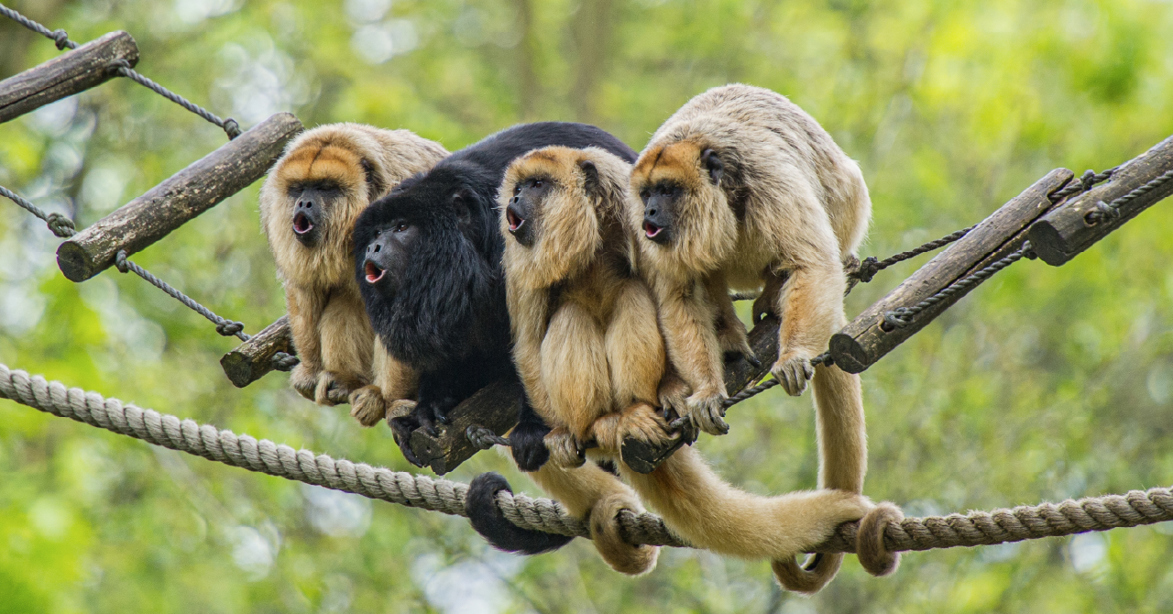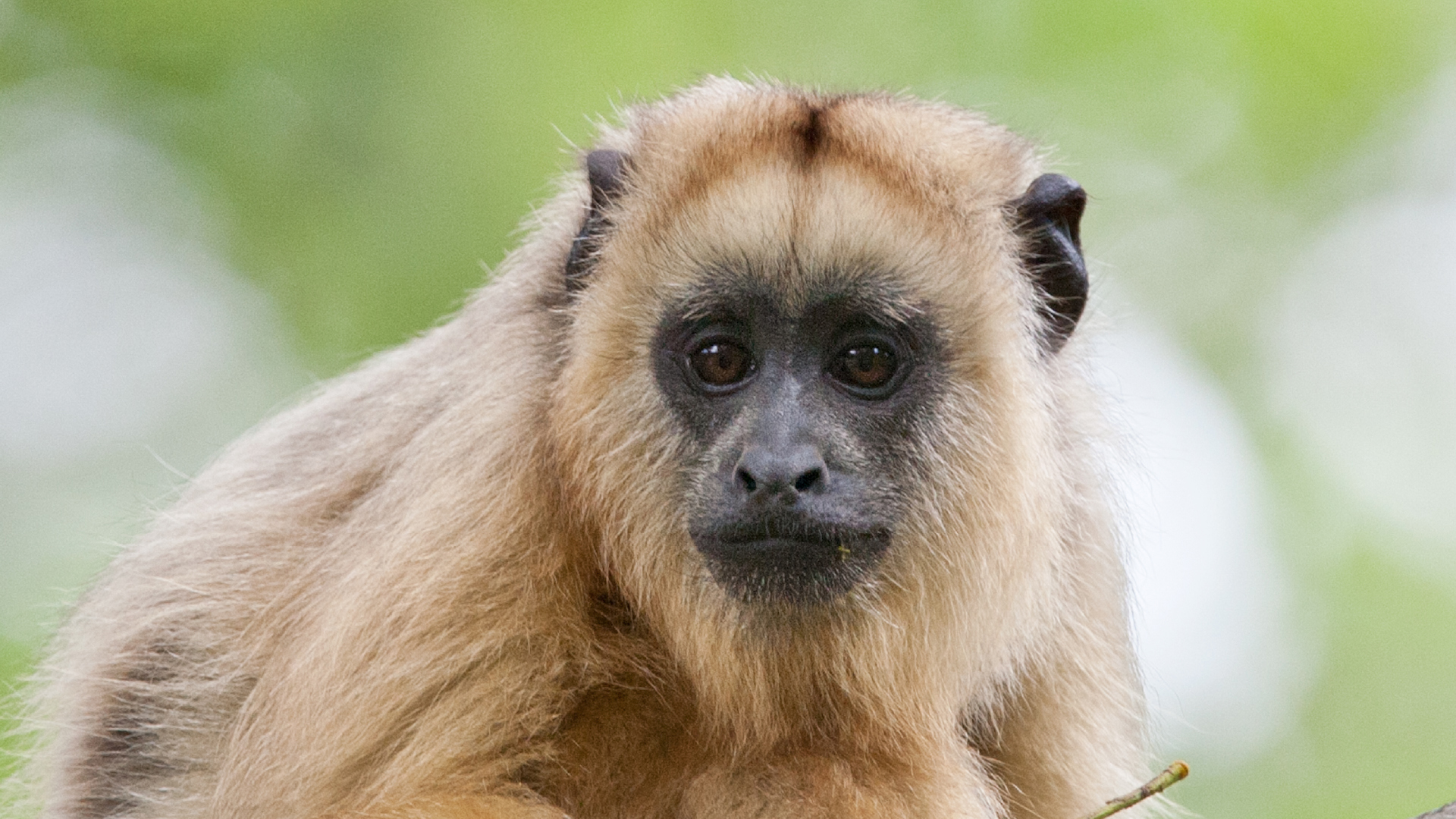Black howler (Paraguayan)
Alouatta caraya
Habitat
Tropical rainforests and deciduous forests
Food
Leaves, fruits and flowers
Weight
♂ ± 8 kg | ♀ ± 5,5 kg
Age
15 to 25 years
IUCN Status
Gevoelig
Appearance
Only the male howlers have black fur; the females have a yellowish-brown one. The male fur is a bit thicker as well. They’re also a bit bigger and have more muscles than their female counterparts. Both males and females have a black face without any fur on it. They also have a scent gland close to their anus. Males have an extra one at their throats. With the scents they produce, they leave traces behind on, e.g., trees and branches. Black howlers have a prehensile tail. The tip is hairless and provides extra grip. By using this, Black howlers are able to hold on extremely well, hanging on with their entire body weight using just their tail! How handy, such an extra hand. They can sense with their tail just as well as we can with our fingertips.
Like their name says, black howlers are able to howl loudly. Their bodies are made for this specifically. For example, these animals have an extra-large larynx and a throat pouch, providing extra power to produce these sounds. You’re able to hear their howl (which kind of sounds like a big burp) from up to 3 kilometres away!
Habitat
In the wild, black howler monkeys live in the South of Brazil and in a part of Argentina (South-America). Here they live high in the trees of the tropical rainforests or broad-leaf forests. The entire body of black howlers is adapted to living in the treetops. With their fingers they can cling on easily to their surroundings, their body is even adapted to the food that they eat.
Lifestyle
Black howlers live in groups of about 15 individuals. Both the females and a couple of males live in the same group. Only one male is the leader; he is allowed to mate with the females. This group structure can also be named a harem group.
Behaviour
Black howlers are very calm animals. Most of their time is spent resting and sleeping. You also barely hear them when they’re walking on their hands and feet. They are most active in the mornings and evenings. Their very quiet behaviour has a lot to do with their eating habits: the leaves they eat don’t contain much energy, so they make sure not to waste it. They howl the most during sunrise; the leader of the group will start, and the rest follows. During the howling, these primates sit in a straight line. The males protect the females by performing this howl. With this, they also signal their territory. Essentially, they’re telling intruders: "Stay away, this is our territory with our own food!" They also warn each other for approaching danger. Compared to actual fighting, howling uses only a fraction of the energy. So, it’s actually quite a smart solution!

Reproduction
When the males and females are ready to mate, they make sure to find a quiet place away from the group. The gestation period is about 187 days (around 6 months). At birth, the young weigh just under 150 grams, and the mother will carry them on her stomach. Later, the offspring move to their mothers’ backs. They are born with light-coloured fur. The offspring will feed from their mother for the first 1.5 years of their lifespan. Other females assist in raising the young. They’ll carry them around and make sure to protect them well. Male black howlers get their black fur at around three years old, while the females retain their lighter colouring. When the males turn five, they are considered adults and can care for offspring on their own. Females already fulfil this role when they are about 3 to 4 years old. At that age, the males leave the group they were born into and either join another group or venture off on their own.
Situation in the wild
Black howlers are found in widely distributed areas. In the wild, they live in about 30 protected national areas and parks. According to the data presented by the IUCN, their population is classified as near threatened. This is due to the continued destruction of the forests they inhabit to make way for soy plantations or as grazing land for cattle.

At Apenheul
The black howlers at Apenheul live on the islands near the Apegaap restaurant. Their howling can usually be heard between 10:00 and 12:00. However, sometimes during the day, they also like to make sure everyone can hear them! They seem to react strongly to changes in the weather.
Population management programme
Apenheul is part of the European Endangered Species Programme (EEP) for Black howlers. By collaborating with other zoos, we help ensure that a genetically healthy and demographically stable population of this species is maintained in zoos.
Fun Fact
Black howlers sleep together in the same tree. They hold on to the branches using their tails.
Want to see the Black howlers at Apenheul?
Get your tickets now and spot all the primate species!

Welcome to Apenheul
Open every day
Park open from Friday 11 April, 10.00 hour